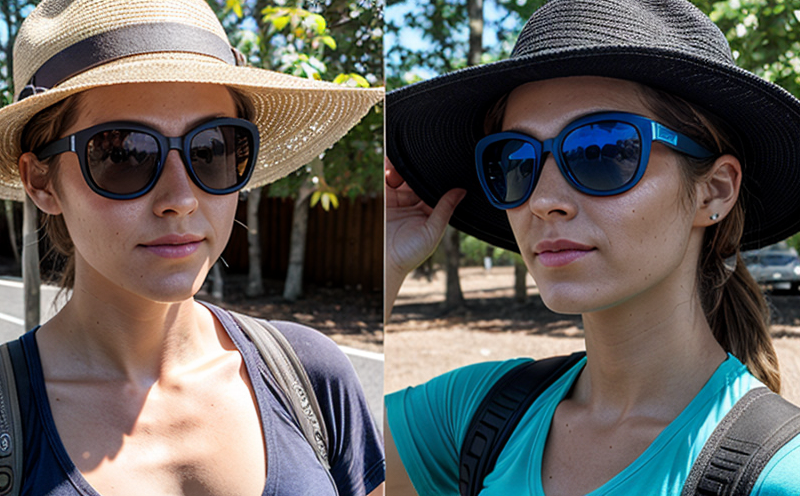ISO 105-B04 Textiles Tests for colour fastness to weathering Xenon arc fading lamp
The ISO 105-B04 test method is a critical procedure used in the textile industry to assess the resistance of dyed or printed fabrics to the effects of simulated sunlight, specifically xenon-arc radiation. This test is essential for ensuring that textiles maintain their color integrity and do not fade when exposed to environmental conditions such as UV light, heat, and moisture.
The test simulates a range of weathering factors including solar radiation, humidity, temperature fluctuations, and artificial aging processes. The xenon-arc lamp used in this test closely mimics the spectral distribution of sunlight, providing accurate results that are relevant to real-world scenarios. This method is widely accepted and used across various sectors such as automotive interiors, outdoor gear manufacturing, and home textiles.
The testing process involves exposing textile specimens under controlled conditions using a xenon-arc light source. The specimen is placed in the test chamber where it is exposed to high-intensity ultraviolet (UV) radiation for specific durations, depending on the desired simulation of real-world exposure. After exposure, the colorfastness of the textiles is evaluated by comparing the initial and final color change using standardized methods like spectrophotometric measurement or visual comparison.
Textiles that pass this test demonstrate superior resistance to fading, ensuring longevity and durability. This is particularly important for products that are exposed to outdoor elements such as tents, awnings, and automotive upholstery. Compliance with ISO 105-B04 ensures product reliability and enhances consumer satisfaction by reducing the likelihood of premature degradation.
The test procedure adheres strictly to international standards including ISO 105-B04, providing a uniform approach across different laboratories around the world. This standardization is crucial for consistency in quality control and compliance with regulatory requirements.
Understanding the mechanics behind this test method helps stakeholders appreciate its significance in ensuring product performance and longevity. By simulating real-world exposure conditions, ISO 105-B04 provides a reliable means of evaluating colorfastness to weathering, making it an indispensable tool for quality assurance in the textile industry.
- Simulates real-world sun exposure using xenon-arc lamps
- Considers humidity and temperature fluctuations
- Evaluates color change through spectrophotometric or visual methods
- Provides a standardized approach for consistent results
Why Choose This Test
- Provides accurate simulation of real-world sun exposure
- Ensures consistent and reliable results across different laboratories
- Aids in product development by identifying potential colorfastness issues early
- Simplifies compliance with international standards and regulations
Customer Impact and Satisfaction
The ISO 105-B04 test plays a crucial role in enhancing customer satisfaction by ensuring that textiles maintain their colorfastness over extended periods of use. This is particularly important for products exposed to outdoor elements, where fading can significantly impact the aesthetic appeal and functionality of the product.
By adhering to this standard, manufacturers can build trust with consumers, knowing that their products are rigorously tested to withstand harsh environmental conditions. This not only improves brand reputation but also leads to higher customer loyalty and repeat business.
Competitive Advantage and Market Impact
Adhering to the ISO 105-B04 standard provides a significant competitive advantage by setting a benchmark for product quality and durability. This ensures that products are not only colorfast but also reliable, which is increasingly important in today's fast-paced market where customer expectations are high.
Incorporating this test into the production process can differentiate a company from its competitors, making it easier to meet and exceed industry standards. This can lead to increased market share, higher sales, and greater profitability for textile manufacturers.





